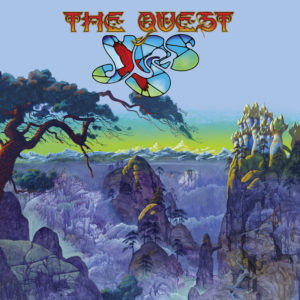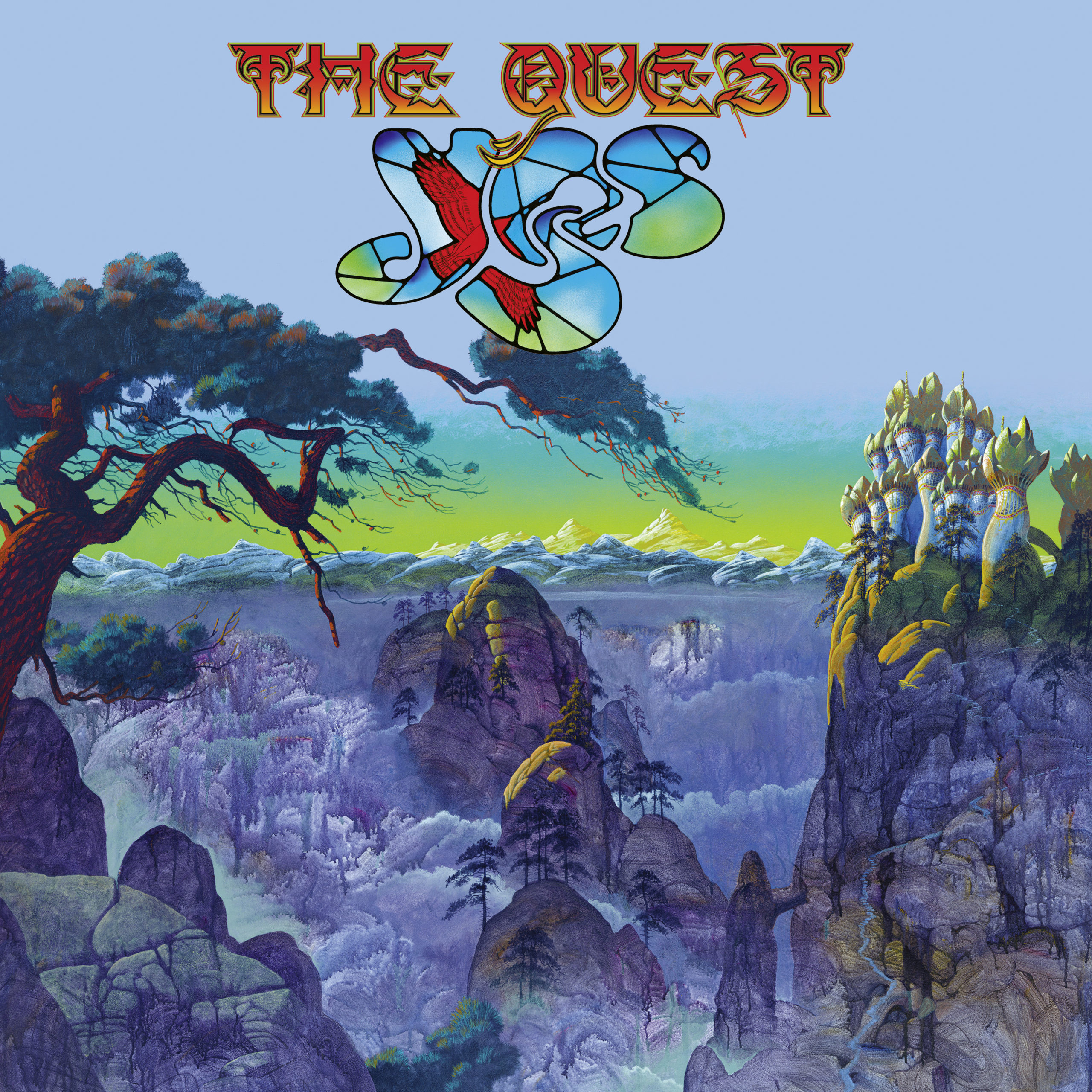Old prog rock heroes delivers a pretty but a bit unremarkable album.
Finally, what happens to most long-lasting bands has now happened to Yes: After 53 years and 21 albums they are for the first time releasing an album without any of the founding members from 1968. Bassist Chris Squire dead in 2015. Sadly, the last album he played on, Heaven & Earth was one of the weakest Yes albums of all time.
To be fair: Guitarist Steve Howe joined Yes on their third long player, The Yes Album, which also was their breakthrough album. After a few breaks from Yes in the 80s and 90s, he joined again permanently in 1996. Since then, he has been one of the most important contributors to the band’s output. And when Squire died, the fact that the original vocalist Jon Anderson had been thrown out of the band in 2008, meant that Howe took the role as the new boss of Yes. He has also produced the new album. Since drummer Alan White, who joined in 1972 and therefore is the longest serving member in Yes now, has been in poor health lately, he seemed to be more than happy to let Howe have that role.
In addition to White and Howe, the band consists of vocalist Jon Davison, keyboardist Geoff Downes (who also was a Yes member in 1980 but is more famous for being in Asia and The Buggles) and bassist Billy Sherwood. He was also a part of Yes as an extra guitar player in 1999, but he has worked with Yes and Yes alumni for over 30 years now. He was also handpicked by Squire to take over for him as bass player in Yes.
Phew! Enough background and history. Let’s talk about what the band delivers on the new album, The Quest. It all starts very well with the Downes and Davison composition The Ice Bridge. Here we get ELP fanfares, Davisons tenor voice in top form and a bass line that doesn’t stand back to anything Squire did. It’s really, really catchy, even while it manages to have a foot in the prog world. It takes a while for Steve Howe’s signature guitar playing to enter the sound waves, but when it does, it sounds heavenly!
 Dare to Know is a song that could’ve been taken from a Steve Howe solo album. No wonder since he wrote both text and melody for it. I’m reminded of early Yes, since Downes plays very Tony Kaye like Hammond organ on it. This is also one of several tracks using a symphonic orchestra. It all sounds very pretty. Howe is good at creating these kinds of tunes and he is also singing a duet with Davison on this one. Relax, we all know what a bad singer Howe is, but as a backup and harmony vocalist, he’s always been very good. The orchestra really adds something here as well. Me like!
Dare to Know is a song that could’ve been taken from a Steve Howe solo album. No wonder since he wrote both text and melody for it. I’m reminded of early Yes, since Downes plays very Tony Kaye like Hammond organ on it. This is also one of several tracks using a symphonic orchestra. It all sounds very pretty. Howe is good at creating these kinds of tunes and he is also singing a duet with Davison on this one. Relax, we all know what a bad singer Howe is, but as a backup and harmony vocalist, he’s always been very good. The orchestra really adds something here as well. Me like!
The hippie factor is held hight at times. Not least in Minus the Man, written by David and Sherwood, which warns bout misuse of technology and social media. The orchestra is also present here, but the song is unfocused and not very memorable. For a minute I’m dreading a rerun of the previous album.
Thankfully everything is saved by Leave Well Alone. Steve Howe shows that the elders are the oldest and most experienced ones. Here he delivers a catchy tune, with hints of Aisa and the 80s through synth stabs and the main riff. The song changes tempo and style several times, but the excellent starting riff and melody thankfully keeps reappearing. It’s also the longest song on the album with its length of over eight minutes. No 1970s grandiose 20-minute compositions here then.
Sherwood sings a lot of lead vocals on The Western Edge, which is yet another song he has written with Davison. Unfortunately, the song is pretty dull, and I’m once again reminded about the fact that even if Sherwood is really gifted musician, he writes dull songs. This one is no exception.
But then we are back into really beautiful sonic territory again. Future Memories is a love song by Davis, which is filled with beautiful string plucking by Howe and Hammond organ and synth backing by Downes. The song also has vocal harmonies like the ones Yes used to do back in the day. It was their trademark in the early years, but it kind of fell by the wayside as the years went on. But here they are back again.
Another thing Yes used to do was thinking forward. They tried new things and broke new musical ground. But that is something this album is completely devoid of. Music to My Ears even use the Mellotron keyboard, for chrissakes. This is an ok ballad by Howe, but there’s nothing spectacular about it.
The song that closes the album is a song written by keyboardist Downes and singer Davison. The song has Downe’s signature all over it, and it sounds like something that could’ve been taken from one of the latter-day Asia albums. And it works, even if it does get a bit syrupy towards the end.
And with that, the album is finished. And I catch myself thinking. – Was that all?
Not necessarily: If you buy the album on CD, you get a CD2 with three bonus tracks. Ironically, the first one of these, Sister Sleeping Soul, is the best track of the entire release! A typical Howe pop song, and it’s got a beautiful melody and a great chorus. And it would’ve fit perfectly on the main album.
The next two songs aren’t really something to write home about. Mystery Tour sounds like Crowded House on empty fuel and Damaged World has Steve Howe on lead vocals. Nuff said.
Too long didn’t read? Here’s a summary:
Yet another Yes album that has a lot of pretty tunes that you will put on now and again. This in sharp contrast to Heaven & Earth, their previous album, which everyone tries to forget. But there’s nothing new here and it’s not really that exciting. Still: This album will give quite a bit of enjoyment throughout the coming cold autumn nights as we approach Xmas!
Grade: 6/10
